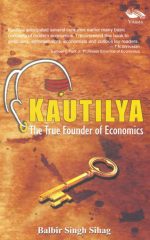Description
About the set :
The book, ‘Arthavyavstha of Mandirs’ by Sandeep Singh is an attempt to document the journey of brainwashing of Hindu minds against their own temples and importance of ‘Temple Economics’ in Bharat and the way forward. The book explains traces of the antiquity, ebb and flow of Temple Economics.
The demolition, disrespect and loot of temples is a millennial old phenomenon that has wounded Bharat in multiple ways. It has a devastating impact on psyche and socio-economic conditions of Hindus. This did not stop even after independence in 1947. Hindus are still struggling to free their temples from the clutches of so-called secular government.
Author : Sandeep Singh : PaperBack ; Pages : 648











Alkesh Patel – :
Many Hindus still do not realize the politics of “hate-Sanatan” is deep rooted in Bharat for last more than seven decades. This problem is very serious that will be detrimental to our own future Hindu generations. Since the Islamic invasions our Mandirs were the first target of invaders because they knew that they are the places where lot of wealth was concentrated. This is the general perception but apart from that, the other main reason was also there. The invaders wanted to convert our great Sanatana civilization into islamic one. Hence we can see that the British and other European invaders who came later also targeted our Mandirs. While the intentions of the islamic invaders was not only to plunder but also to convert the Mandirs into masjids and other islamic structures, the intentions of the British and Europeans was to discourage our civilization to continue the Sanatan parampara. This is the history till 1947, but what happened actually after the independence is very painful and disgusting. The Indian National Congress along with the leftist and islamist leaders systematically started to destroy all activities related to Mandirs, which continue even today! What happens in Tamil Nadu, Kerala, some north eastern states is evident.
In this backdrop the two volume books – Temple Economics (Arthvyvstha of Mandir) and A Decade for Mandirs (Mandiron ke liye Ek Dashak) by Sandeep Singh are not only eye-opener but also a guiding factor to save our Mandirs so that we can secure the FUTURE of Sanatani Hindus. Sandeep Singh has done an exhaustive research on the subject and convincingly established that Sanatan-Sanskruti and Hindu civilization are the two sides of the same coin. Existence of both is interwoven. If you think that WHAT CAN I DO? Or WHAT CAN BE DONE? to save ourselves and our Mandirs, these two volumes are a MUST READ.
PS Rao – :
Book is very well researched and informative with hundreds of references to other material on the same topic. Insightful book with very forceful arguments due to conviction of the author. So much to learn while reading this book. Highly recomended to read or gift to anyone who is interested on this topic.
Satyajit Kumar – :
This book is an concise encyclopedia of knowledge related to Mandirs. Like a spider web, the various aspects related to mandir, economy, workmanship and history are nicely woven together in this unique master piece that was much pleasure to read. The author has done extensive and painstaking work while simplifying it for the readers to gain much knowledge in fraction of time it took the author. So much about Hindu mandirs, have learnt from this well-researched and written book.
SN Simha – :
Must read book for any sincere Hindu!
From this book learnt many new things and good fact. For example, we go to temple in gratitude for all that Bhagwan has given us. We make offering in temple to Bhagwan/Devis as thanks and in gratitude for them having facilitated our success. Temple is also not a economic redistribution vehicle as thougt by foreign inspired non-devout intellectuals.
Book is very long and in slightly small print. The book 1 is 400 pages but will become 600 pages if a foreign publisher will print it. One good thing in the book has elaborate table of contents. Reader can just go to the right section and read, so they can learn something interesting or suited to their interest.